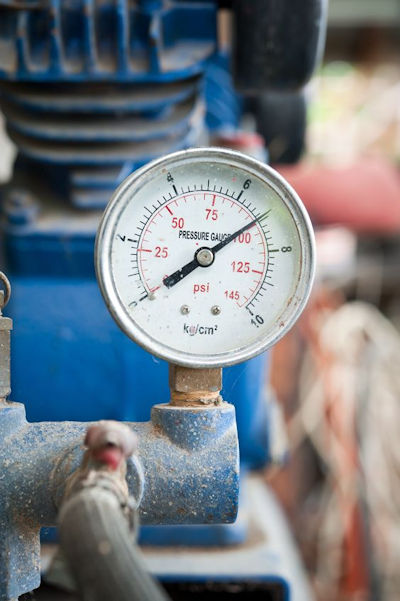Hoses and Piping Under Pressure
Hoses and pipes under pressure are very hazardous and care must be taken when working with them. It's important to understand how pressure is measured.
- Gauges on platforms are usually calibrated to read zero pressure at sea level.
- Gauges measure pressure in pounds per square inch gauge (psig)- the force in pounds of pressure per square inch on a surface relative to atmospheric pressure.
- When you read 40 psig on a gauge, the actual or "absolute" pressure (psia) which is the pressure relative to a zero-pressure environment (outer space) would be 14.7 psi greater or 54.7 psia.
When using temporary hoses and piping under pressure, ensure the following:
- Secure temporary hose, piping, and/or associated connections operating under pressure. This will help prevent workers from falling or moving objects while disconnecting.
- All temporary hoses, piping, and/or associated connections operating at a working pressure of 290 psig or more should be designed and used according to manufacturer specifications or certified by a professional engineer.
- Establish a safe work zone and post warning signs before temporary hoses and piping are pressurized to 290 psig or more.
- No workers should enter a danger zone while hoses or piping are under pressure unless allowed to do so by a supervisor or authorized representative.
Knowledge Check Choose the best answer for the question.
2-4. What should be done before temporary hoses and piping are pressurized to 290 psig or more?
You forgot to answer the question!

